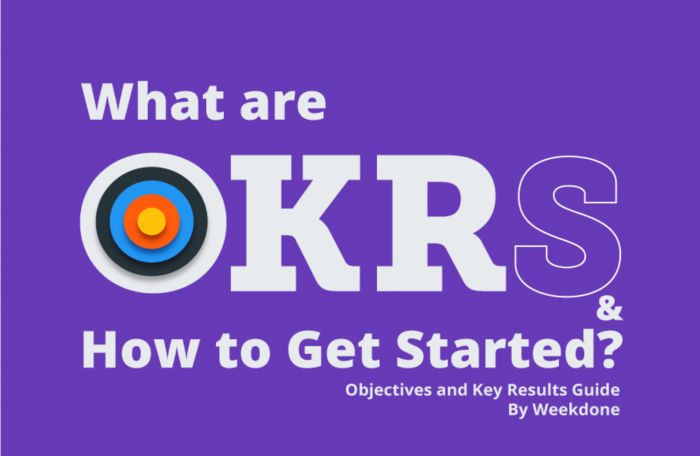OKR vs KPI – definitive guide on how a lot of smart leaders are following the likes of Google and are getting started with Objectives and Key Results (OKRs). So what is the main difference?
Key Performance Indicators (KPIs) exist in most companies. You may have used them for years in your own team. However, often, when the team and company are growing, KPI based tracking stops being satisfactory. KPIs help you track work but they don’t inspire your team and don’t help you keep focus. That is why a lot of smart leaders are following the likes of Google and have started looking at Objectives and Key Results (OKRs) methodology.
OKR vs KPI – main differences
OKR seems very similar to KPIs but offers many benefits to traditional progress tracking techniques do not. They help your team to become more focused and organized.
With OKRs you’ll set quarterly and yearly inspirational Objectives. Then you’ll track and measure movement towards them with Key Results. When you finish your Key Results, you get closer to completing your objectives.
Based on the description, it may be quite hard to see the difference between OKR vs KPI. If you are using KPIs now and want to move to an OKR based goal setting, your first instinct will probably be to just use your KPIs as Objectives. That’s what I did, at least. It took me 4 months to understand that this is not actually the most effective tactic.
While KPIs are measurable, Objectives are not. In the OKR system you measure Key Result that help you get to your inspirational Objectives. That makes the move from one system to another tricky as you can’t just copy-paste your KPIs.
Going from KPIs to OKRs.
To make sure you get the transition from KPIs to OKRs. right, use this 3 step plan to help you. The 3 steps are easy to follow and foolproof:
Step 1: Set objectives. Objectives in OKR are not given as measurable metrics and so can’t be copied straight from KPIs. What you need to do is look at your measurable KPIs and group them into captivating goals.
Step 2: Copy KRs from KPIs. When your Objectives are set, you can attach your old KPIs to them as Key Results. Make sure you don’t have more than 3 KPIs attached to a single Objective. Otherwise, you’ll be overwhelmed. As OKR coach Felip Castro has said, the fewer Key Results you have, the easier they are to follow: “Even so, no team should have more than 10 KRs – and I am not saying that every team can have 10, the fewer, the better.”
Step 3: Make sure your KRs are worded correctly. The easiest way to set Key Results is to follow the SMART model. SMART is a methodology that sets criteria to the goals you set. The Key Results must be Specific, Measurable, Achievable, Relevant, and Time-bound. The questions you need to ask for each goal are:
- Specific: is the KR well-defined and understandable for everyone?
- Measurable: can you measure success or failure?
- Achievable: is it realistically possible to do?
- Relevant: is this KR important for your objective?
- Time-bound: have I clearly established when the goal must be met? For OKRs the time is usually one quarter.
Benefits of evolving your tracking system.
Following this checklist, I managed to change the performance review and goal setting process in my growing team without disrupting their day-to-day work. After that, other managers in my company used my system to convert to OKRs as well. All of them agree, that it has helped to keep their teams on the right track.
When you start using OKRs, you can see that you don’t have to deal with so many “growing pains” as before. The long term Objectives make sure your team knows what they need to do (KRs) and why (Objectives). And the system scales very well. I feel confident, I could hire another 50 people in my team without losing productivity. And it’s also great for cross-team communication.
When moving from spreadsheets to Weekdone, Lyle Stevens, from Mavric said that OKR process makes it easier to align what every individual of the company wants to achieve each quarter. With OKR, you’ll have a clear advantage over the KPI based system.
So if you are feeling that your team is not focused and organized enough, try out OKRs and you’ll quickly see it will help you stay organized and focused. The best tool for that is Weekdone. Try out Weekdone for free or read more about the OKRs.
If you want to learn more about KPIs and OKRs, take a look at the OKRFAQ


